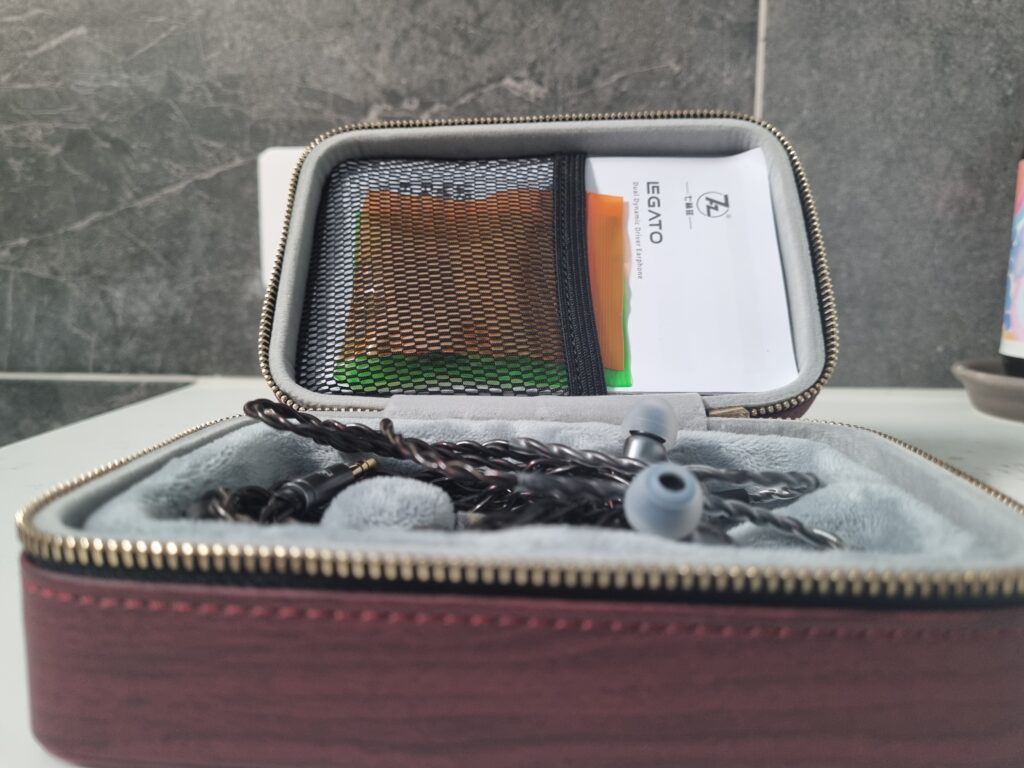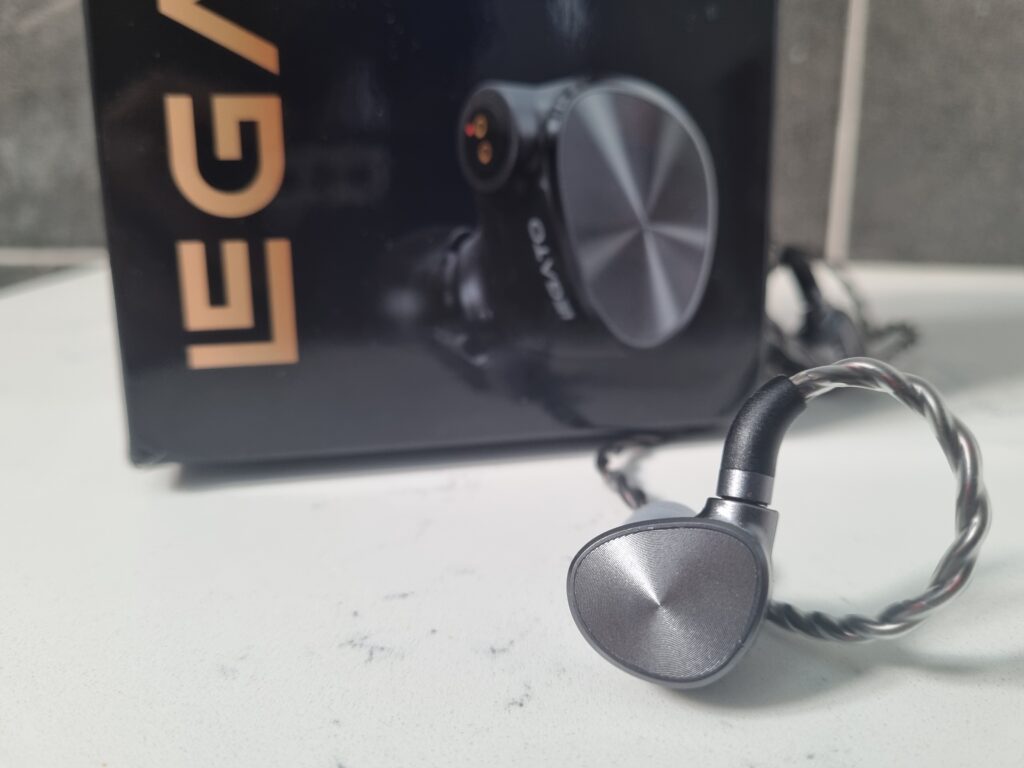Disclaimer: I would like to formally thank Kareena from Linsoul Audio for graciously providing us with the 7Hz Legato for review. I am not affiliated with 7Hz or Linsoul Audio, and the views shared below reflect my honest thoughts surrounding the product.
Pros:
- Full-aluminium build and lightweight frame.
- Subwoofer-like rumble with concussive mid-bass
- Bright treble for an exciting V-shaped contrast
- Deep and wide soundstage punches above price-point
- Reverb-heavy sound creates a natural “live-like” performance sound-field
Cons:
- Unnaturally boosted treble detracts from timbral realism
- Midrange suck-out masks intricate details
- Imaging and separation ramshackled by excessive mid-bass bleed
Introduction
7Hz is a Chinese audiophile company founded by a collective team of talented engineers in 2012. Harnessing their individual skill sets, every collaboration bore fruit, such as the religiously revered “Timeless”, a planar-magnetic IEM that remains an unblemished emerald in the sub-$200 price point.
The Timeless was the prodigious moment that 7Hz built its glowing reputation amongst the Head-fi fandom for its outstanding price-to-performance ratio. Their reputation soon started to precede them (for better or worse), where the mere utterance of new 7Hz releases stirred up a flood of speculation and discussion.
This time around, 7Hz’s latest release, the Legato, is a product that bucks the trend it had chartered for itself, which is unprecedented territory. Borne out of an unlikely collaboration between 7Hz and Larry Fulton (AKA Kopi Okaya) from Singapore, this out-of-leftfield IEM was designed for one definitive outcome: gargantuan bass aplomb reminiscent of oversized cabinet speakers in the 80s.
Today, we’re examining this daring product under a microscope, determining if it truly lives up to the hype online. The 7Hz Legato can be purchased officially from Linsoul Audio for USD 109.
Technology
The 7Hz Legato follows the road the Truthears Zero had set out, utilising two dynamic drivers — a 12mm bass woofer and a 6mm tweeter for the mids-highs. A high-quality Japan-made tantalum capacitor relegated segments of the overall frequency band between them.
This complex array of internals was housed in a full-aluminium jacket with detachable 0.78 2-pin cables on either channel. Overall, the 7Hz Legato’s driver topology stuck to the standard 2-channel dome tweeter/woofer speakers of yesteryear. We’ll soon find out how the Legato performs in the subsequent sections.
Unboxing

The 7Hz Legato’s box is fairly standard, with a thin rectangular cardboard box with an oversized/blown-up picture of the Legato front-and-centre. Sticking to the tried-and-true formula, the product’s central features are listed as bullet points on the back.
The 7Hz Legato’s oversized faux leather case occupies every inch inside the box. And I’m not being facetious. The provided carrying case is built like a brick sh*thouse. Overkill? In terms of portability, yes. But it certainly feels luxurious relative to its asking price. Your mileage may vary.
The case’s interior is finished with slate grey suede, with the 7Hz Legato’s resting comfortably against pre-moulded cutouts on the left and a variety of silicon tips (S, M, L) and turbine-shaped earwax filters stowed away in a netted compartment on the right.
Design, Comfort, and Durability

The Legato shares a familiar DNA extrapolated from the Dioko, with a leaf-shaped or tear-drop silhouette. The first-striking detail on the Legato is the shallow bevels rippling outward from the centre of each faceplate in a sunburst pattern, refracting light in extraordinary gradients. Attention to these little details is a step above what is customary in this industry. Affordable luxury is the perfect way to distinguish oneself from the audio riff-raff, and the Legato achieves just that.
On the backside of each channel, you’ll find three-pin-sized hole vents to depressurise the overabundance of bass within a minuscule chamber. Unsurprisingly, the presence of “open” sections weakens Legato’s ability to isolate the listener from surrounding ambient noise. Still, it’s not extremely evident by its “excitable” sound signature (more on that later).
The Legato’s nozzles are just shy of mid-length, with a smaller stem that’s more recessed. Paired with the Legato’s bulbous chassis, you’re left with a relatively shallow fit with a protruding shell. But do not mistake this for a loose fit. Performing a slightly unrealistic headshake test, the Legato’s were never displaced from ears (to my amazement). Etymotic, it is not, but it still gets the job done.
The Legato’s shells are fabricated from aluminium instead of stainless steel, with 2-pin 0.78mm detachable terminations. While aluminium is more susceptible to damage, the former is far lighter and much better suited for long-term listening sessions without adding unwanted stress on the inner ear when worn. The Legato’s premium fit-and-finish is virtually indistinguishable from its more expensive counterparts: a positive trend in the Chi-fi community that has yet to abate (hopefully never).
The Legato like its siblings before it, speaks volumes about the care the 7Hz team showcases in the thoughtful design and precise manufacturing of its IEMs.
Cable Quality
The Legato’s cables are constructed from a silver-plated Ohno continuous cast (OCC) copper, terminated in 3.5mm unbalanced for day-to-day use. The cable’s sheathing-of-choice is supple and flexible, staying out of the way of day-to-day chores. It never tangles nor does it obstruct movement when using the Legatos on the daily commute.
The hardware adorning the cable is fashioned from aluminium at the Y-split and 3.5mm termination. Overall, the cables are smartly designed to tick the “style” and “substance” boxes.
Onto the next page for details on sound…



